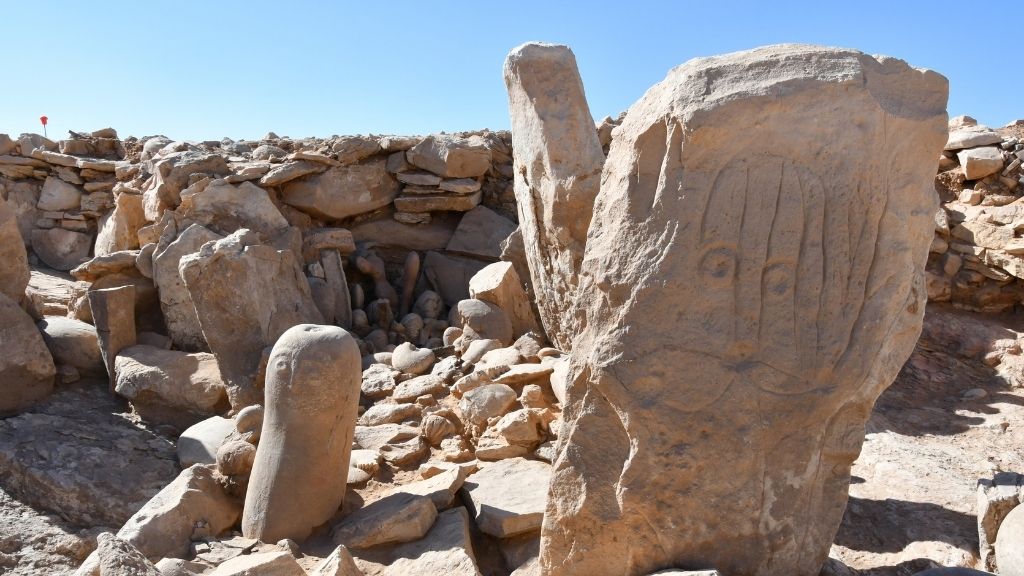'Almost intact' shrine found in Jordanian desert is 9,000 years old
Stone Age hunter-gatherers erected the shrine.

Archaeologists have uncovered a 9,000-year-old shrine in Jordan's eastern desert that was likely used in the practice of religious hunting rituals, The Associated Press (AP) reported.
The site lies in the Khashabiyeh Mountains, located in the eastern Al-Jafr Basin, according to a statement released by the Jordan News Agency. A team of Jordanian and French archaeologists excavated the site in 2021 and found a variety of artifacts and geologic treasures, including 150 marine fossils, animal figurines, well-made flint tools, an altar and hearth, and two large stones with carved, human facial features. The team also discovered an architectural model of a "desert kite," a type of mass trap used to capture wild gazelles and deer.
Near the ritual complex, the team had previously discovered several full-size desert kites, the AP reported. Each enormous trap consisted of two long stone walls arranged in a V-shape, and at the vertex of that V lay a small, walled enclosure. These structures can reach more than a mile (several kilometers) long and can be found in many arid landscapes of the Middle East and Southwest Asia, according to Universes in Universe (UiU), citing information from the Department of Antiquities of Jordan.
Related: 24 amazing archaeological discoveries
Hunters would drive animals into the wide end of the trap and into the enclosure, where the animals would then be slaughtered. The newfound traps, which are evidence of collective hunting, date back to 7000 B.C., as does the ritual site, according to the statement.
The proximity of the desert kites to the ritual site hints that these traps held an important place in the cultural, economic and symbolic life of this New Stone Age, or Neolithic hunter-gatherer society, the researcher team suggested, according to the AP.

"The site is unique, first because of its preservation state," Wael Abu-Azziza, co-director of the project and an archaeologist with the French Institute for the Near East (Ifpo), told the AP. (Abu-Azziza co-directed the project with Mohammad B. Tarawneh, an associate professor at Al-Hussein Bin Talal University in Ma'an, Jordan.)
Sign up for the Live Science daily newsletter now
Get the world’s most fascinating discoveries delivered straight to your inbox.
"It's 9,000 years old and everything was almost intact," Abu-Azziza said.
Originally published on Live Science.

Nicoletta Lanese is the health channel editor at Live Science and was previously a news editor and staff writer at the site. She holds a graduate certificate in science communication from UC Santa Cruz and degrees in neuroscience and dance from the University of Florida. Her work has appeared in The Scientist, Science News, the Mercury News, Mongabay and Stanford Medicine Magazine, among other outlets. Based in NYC, she also remains heavily involved in dance and performs in local choreographers' work.









